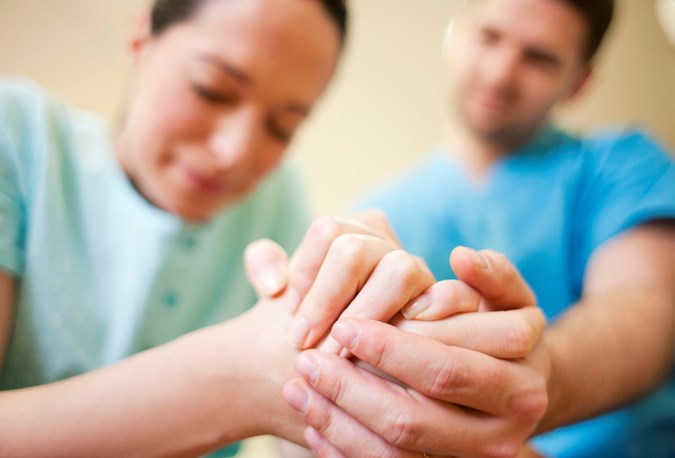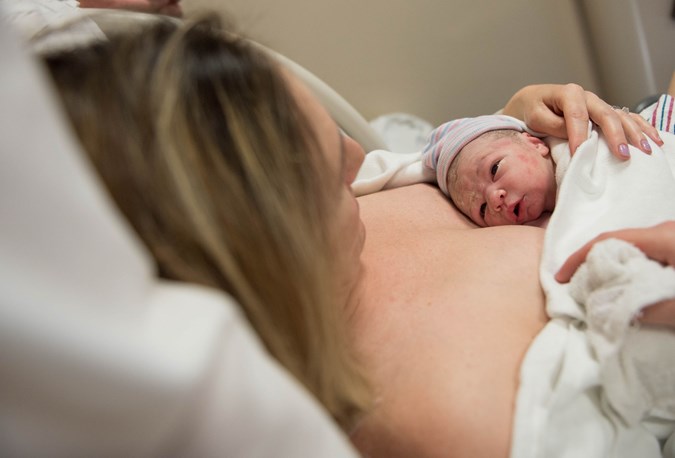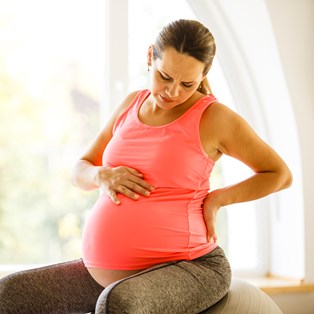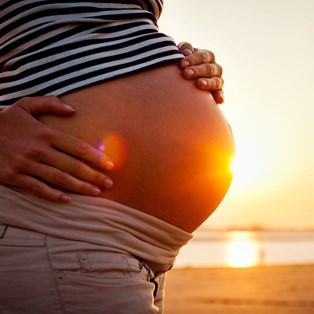How to bring on labour: Natural ways to induce labour

Keen to get that baby moving? Read on!
By Practical Parenting
April 11 2019
It’s been 41 weeks and you’re worried about being overdue and needing to be medically induced. You’re wondering how to induce labour naturally without the need for a drip or an injection. You can try one of the following suggested ways to bring on labour but check with your doctor before attempting any of them and make sure you are at least 40 weeks’ pregnant before considering them.
Does membrane stripping bring on labour?
This is one of the only proven ways to bring on labour without medication. Sometimes called a ‘stretch and sweep’, it may be recommended by your midwife or obstetrician.
Your practitioner will use a gloved hand to separate the amniotic sac from the area around your cervix. This releases hormones called prostaglandins, which help prepare the body and can be what brings on labour.
It can be an effective, quick and safe method but it is not possible if you have a vaginal infection. You may experience cramps and spotting afterwards. There may also be an increased risk of your waters breaking. If this happens, visit your hospital or birth centre straight away.
Does having sex bring on labour?
How to bring on labour and enjoy yourself with your partner at the same time? Having sex has been found to bring on labour, although more evidence is needed. Sperm contains high levels of prostaglandins, which help to start labour.
Sex can also trigger the release of oxytocin, a hormone that starts uterine contractions. Don’t have sex after your waters have broken as this can increase your risk of infection.

Getty Images
Does exercise bring on labour?
Any exercises that get the heart rate up, but aren’t too vigorous, may help to bring on labour. There is no solid evidence that it will help but exercise such as swimming, yoga or walking can also help reduce stress and increase your strength.
Walking also allows your hips to sway, which may help to bring the baby down into position. Being upright also encourages it to move down into your cervix.
Does acupuncture and acupressure bring on labour?
Acupuncture, the insertion of needles into specific points on your body, can stimulate the release of oxytocin and bring on contractions, though more evidence is needed.
Some practitioners believe acupressure, where pressure points on the body are pressed, can help to start labour. It may also help to alleviate some of the pain and discomfort during labour. With both of these alternative practices, make sure you see a qualified practitioner.

Getty Images
Does castor oil bring on labour?
Taking castor oil is thought to stimulate your stomach and uterus and help to start labour but it is a strong laxative and may do nothing more than give you diarrheoa and nausea, so it’s best avoided.
Are there natural ways to bring on labour?
Some people believe ingesting herbs such as blue and black cohosh or applying evening primrose oil directly onto your cervix can kick-start labour but there are few medical studies supporting their use and they may cause complications so are best avoided.
Can certain foods or drinks bring on labour?
Eating spicy food is often said to bring on labour but there are no studies to support this and it may upset your stomach, particularly if it is not part of your regular diet.
Midwives often recommend drinking red raspberry leaf tea. There’s not enough evidence that it works to bring on labour, but it won’t do you any harm. Fresh pineapple is high in bromelain, which may help to thin out your cervix. Again, there is not enough evidence to support this, but it can’t hurt to try.
Can stress relief bring on labour?
Stress hormones are thought to impede labour. Whether or not this is true, doing things that relax you such as having warm (not hot) baths, walking, gentle massages and meditating will all help to keep you calm.
Can nipple stimulation bring on labour?
There is some evidence to suggest that nipple stimulation can help to bring on labour but most practitioners don’t recommend it as it can cause complications.













